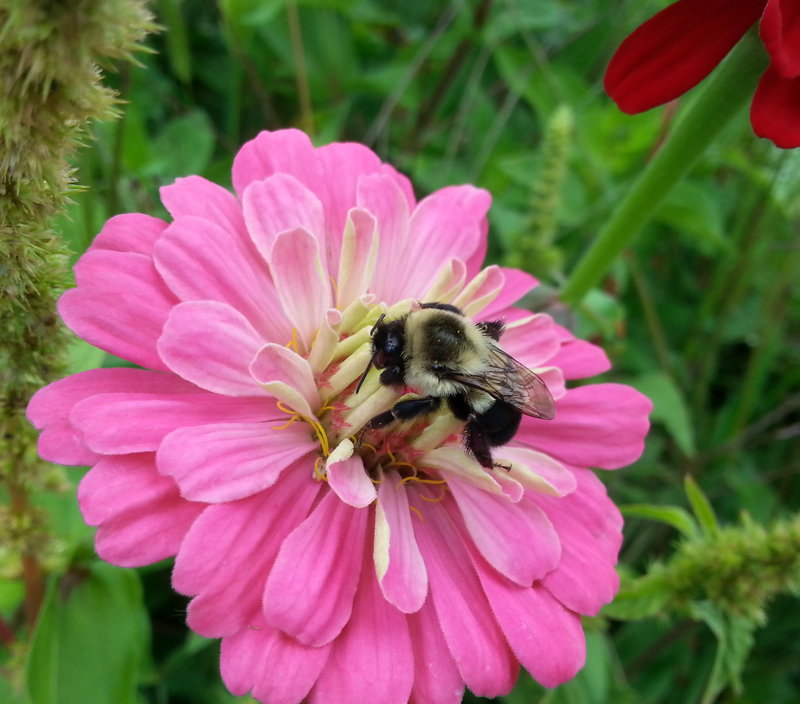Back to September 2016 Newsletter
The Life – and Death – of a Bumblebee

Kim Fellows
I recently received an email from my brother-in-law, who lives in Ottawa, with photos of a large, dead bumble bee he had found. She turned out to be a queen common eastern bumble bee, Bombus impatiens.
Bumble bees are generalists, and rely on a succession of plants that flower from early spring when the queen emerges from hibernation, to late summer or fall when the colony dies. When she emerges in the spring, the queen will spend several weeks establishing her colony, usually seeking out abandoned mouse burrows, rocky crevices, or grassy tussocks that can accommodate a population that may reach a few hundred workers. She then moves in to her new home, staying in the nest through the season as she lays eggs.
When they are not working, female bees generally rest in their nests. Male bees, on the other hand, have nothing to do with nest building or provisioning, so find other places to rest and sleep. You may have seen a cluster of male bees clinging by their mandibles (jaws) to flowers, stems, or twigs. Peek under the drooping heads of goldenrod flowers, and you may discover some male bumble bees.
Bumble bees and a few other insects are like warm-blooded animals in that they can regulate their temperature. They have the ability to dislocate their flight muscles from their wings, in order to "shiver" and create warmth, allowing members of the genus to forage in cooler temperatures than most other bee species. The arctic bumble bee even has a brood patch – a bare spot on her abdomen that transfers heat to her young – like many birds do. Because they begin foraging before many other bee species that need warmer temperatures, bumble bees are important pollinators of early spring blossoms of some fruit-bearing plants.
This shivering ability has another important purpose: it is used for pollination. When a bumble bee "sonicates", as it is technically called (it is also called "buzz pollination"), pollen is released from the flower, in a manner similar to the action of a salt shaker. In fact, some blossoms, such as those of the tomato, cranberry, pepper and blueberry, need buzz pollination to efficiently release their pollen. You can often hear bumble bees sonicating: Listen carefully and you’ll hear their low frequency buzz as they fly from flower to flower change to a “middle C” note when they buzz pollinate! This intense action requires a lot of energy, so bumble bees depend on having a banquet of food available throughout the growing season, starting with the early-flowering willows and maples, which provide great amounts of nectar.
Sadly, the dead bumble bee my brother-in-law found was a new queen. Her wings and hair were intact; older queens will have bedraggled wing margins and sometimes look scruffy. That means one fewer bumble bee colony next year.
As you put your garden to bed for the winter, please be mindful of places a bumble bee queen may hibernate. And in case you're planning next year's garden layout or looking for plants suitable to feed bumble bees, you may want to check out this useful guide or the other resources on our website.
**
Kim Fellows is Pollination Canada's outreach coordinator.
Not yet a member?
An annual membership to Seeds of Diversity gives you access to our seed exchange, seed grow-out programs, and our online news.

We depend on donations to do our work.

Thank you for your support!
